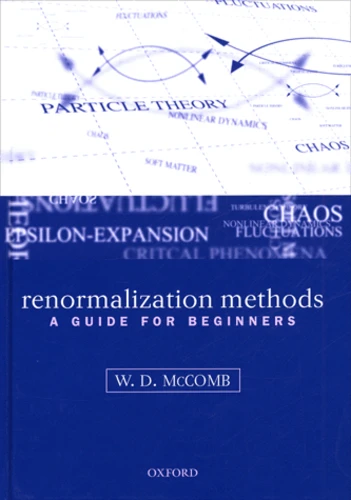Renormalization methods. A guide for beginners
Par :Formats :
- Paiement en ligne :
- Livraison à domicile ou en point Mondial Relay indisponible
- Retrait Click and Collect en magasin gratuit
- Nombre de pages330
- PrésentationRelié
- Poids0.8 kg
- Dimensions17,4 cm × 24,8 cm × 2,4 cm
- ISBN0-19-850694-5
- EAN9780198506942
- Date de parution01/01/2004
- ÉditeurOxford University Press
Résumé
This is a unique book, occupying a gap between final-year undergraduate texts on critical phenomena and advanced texts on quantum field theory. It covers a range of renormalization methods with a clear physical interpretation (and motivation), including mean-field theories and high-temperature and low-density expansions. It then proceeds by easy steps to the famous epsilon-expansion, ending up with the first-order corrections to critical exponents beyond mean-field theory. Nowadays there is widespread interest in applications of renormalization methods to various topics ranging over soft condensed matter, engineering dynamics, traffic queueing and fluctuations in the stock market. Hence macroscopic systems are also included, with particular emphasis on the archetypal problem of fluid turbulence. The book is unique in making this material accessible to readers other than theoretical physicists, as it requires only the basic physics and mathematics which should be known to most scientists, engineers and mathematicians.
This is a unique book, occupying a gap between final-year undergraduate texts on critical phenomena and advanced texts on quantum field theory. It covers a range of renormalization methods with a clear physical interpretation (and motivation), including mean-field theories and high-temperature and low-density expansions. It then proceeds by easy steps to the famous epsilon-expansion, ending up with the first-order corrections to critical exponents beyond mean-field theory. Nowadays there is widespread interest in applications of renormalization methods to various topics ranging over soft condensed matter, engineering dynamics, traffic queueing and fluctuations in the stock market. Hence macroscopic systems are also included, with particular emphasis on the archetypal problem of fluid turbulence. The book is unique in making this material accessible to readers other than theoretical physicists, as it requires only the basic physics and mathematics which should be known to most scientists, engineers and mathematicians.

